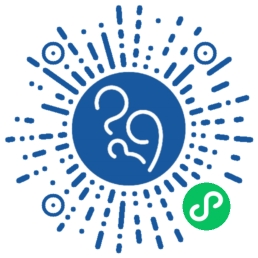
Primary PCI Treatment for Heart Attack: A Live-Saving Procedure at Beijing United Family Hospital and Clinics’ Cardiovascular Center
The Cardiovascular Center at Beijing United Family Hospital and Clinics (BJU) has established a special Green Channel program with the Emergency Department for the treatment of heart attack (acute myocardial infarction). This Green Channel was created to offer the earliest possible medical intervention for heart attack patients. Using the Green Channel fast tracks diagnosis and treatment to allow for intervention within 90 minutes after patients arrive at our Emergency Room. This expedited process significantly reduces the occurrence of fatal complications of heart attack and greatly improves patient outcomes and survival rates.
What is an emergency primary PCI?
According to United Family Healthcare (UFH) cardiology expert Dr. Pi Lin, the first 6 hours after heart attack onset is crucial to patient survival. The key to successful treatment is to open the infarct-related artery of the heart in a timely, effective, and permanent fashion within this short timeframe. The earlier the intervention, the better the prognosis. After 3 hours of heart attack onset, approximately 50% of the heart’s myocardial cells begin to die, or necrotize – 6 hours later, this necrosis is irreversible. Recanalization, or restoring the blood flow to the infarct-related artery within 6 hours after the attack can greatly reduce mortality.
An emergency primary percutaneous coronary intervention (PCI) is a procedure performed on patients who are suffering from an on-going heart attack within 12 hours of the onset of symptoms. Patients will first undergo a coronary angiography to identify the culprit coronary artery lesion and its location. They will then be given a percutaneous transluminal coronary angioplasty (PTCA) and/or stent implant for recanalization and reperfusion, as well as functional rehabilitation. Our Green Channel maximizes the short, life-saving window that an emergency primary PCI can be administered, giving doctors the best chance to save patients dying from heart attack.
An emergency primary PCI significantly reduces mortality rates
Heart attack is one of the most critical diseases our Cardiovascular Center treats – with the rapid pace of societal change and economic development in China, its occurrence is steadily on the rise. Conventional treatment, however, is still far from ideal. Early-stage conservative modalities for heart attack include analgesia, angiectasis, and symptomatic treatment – none of which are effective at reducing mortality rates and disability. Moreover, patients undergoing conventional treatment need to be hospitalized for longer periods of time, causing greater stress for both them and their families. Statistically, the mortality rate of conventionally-treated heart attack is 30%, while with the implementation of conventional thrombolytic therapy, can be as low as 10%. Compared with an emergency primary PCI, however, the main drawback of thrombolytic therapy is that the vessel opening rate is only about 60%, limiting angina relief and the efficacy of preventing re-infarction.
With the development of emergency intervention treatments for heart attack in the 1990s, the application of coronary intervention technology in tertiary hospitals has become routine. When an emergency primary PCI is performed, the rate of heart attack mortality falls below 4%. The rapid blood flow recovery afforded by emergency primary PCI gives patients an enhanced quality of life both during and after recovery. With so many benefits for doctors and patients, it is clear why emergency primary PCI has become the preferred treatment for heart attack.
Highly-skilled medical staff
Heart attack is a severe, acute disease with rapid changes and high mortality rates. The earlier medical intervention can be rendered, the better the prognosis. Because of the critical nature of heart attack, a hospital not only needs life-saving technologies and integrated facilities, but also a team of compassionate, close-knit and highly-skilled emergency cardiology physicians.
The PCI Team at BJU’s Cardiovascular Center is led by renowned cardiovascular specialist Dr. Hu Dayi, who pioneered coronary intervention in China and created the country’s first Green Channel program and intervention treatment center for heart attack. Chief PCI surgical interventionist Dr. Wang Lei has 16 years of clinical practice and specializes in critical rescue in cardiovascular medicine and intervention. Since he began his work in 24 hour emergency intervention for heart attack in 1995, Dr. Wang has performed more than 8,000 coronary arteriographies, over 1,500 PCIs, and handled more than 500 emergency primary PCI cases.
After intervention, UFH is unique in its cardiac rehabilitation service, providing the best post-treatment rehabilitation for PCI patients available so that they can return to their normal, healthy lives as early as possible.
At UFH, the health and happiness of our patients is our priority. With this philosophy, the PCI Team at BJU’s Cardiovascular Center strives to save not only hearts, but also lives.
Copyright United Family Healthcare 2014 All right reserved - 京卫网审[2014]第1927号 - 京ICP备13017554号-4





